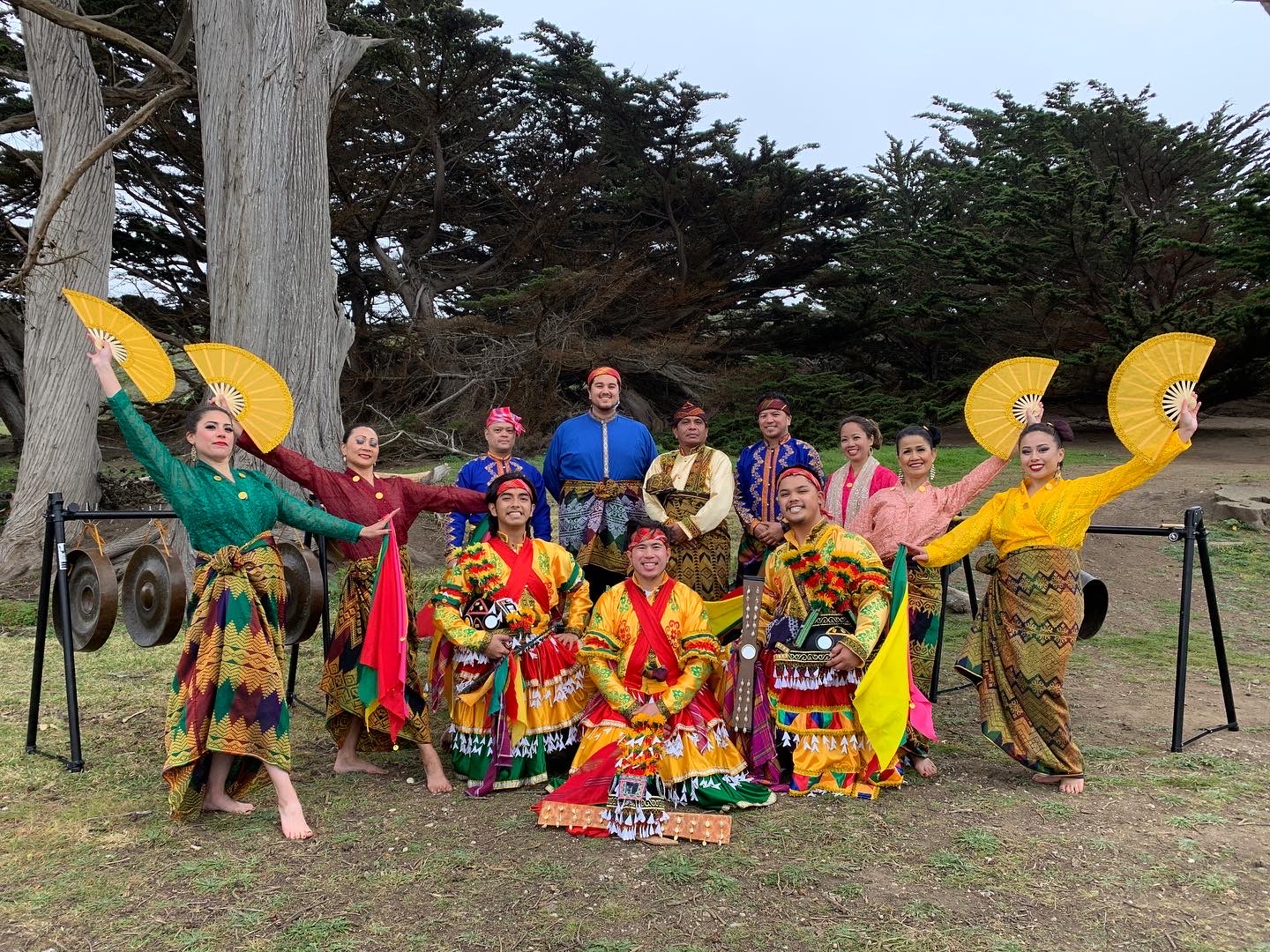by shady Radical
shady Radical is a 2022 Archiving and Preservation Fellow with Ballethnic Dance Company. Read more about the Fellowships here. This is the first part of shady’s blog.
July 15, 2022: A Space to Grow and Thrive

The entrance to Ballethnic’s space.
Ballethnic is a 32-year-old Black ballet company and school in East Point, Georgia that combines African dance with modern ballet. Under the artistic direction of co-founders Mr. Waverly Lucas and Ms. Nena Gilreath, Ballethnic offers a community-oriented movement program to underserved communities. Their leaders and educators have extensive training and background including dancing with Dance Theatre of Harlem under Arthur Mitchell; serving on the faculty of the University of Georgia’s Dance Department; and graduating from University of Limerick’s Ethnochoreology Master’s program. They have dedicated their lives to making space for people to move, grow, and thrive in ways less accessible to people of color and varying body types.
The Space
Ballethnic Dance Company and Academy is located in a large, fire-engine-red building at the end of a cul-de-sac surrounded by luscious flora, potted plants, and compost bins. Interestingly, the building is rumored to have been built by a Delta airlines pilot, which seems destined considering that Ms. Nena dreamed of creating a space “where the sky was the limit.” Just being here makes you think about how spaces remember and our bodies never forget.
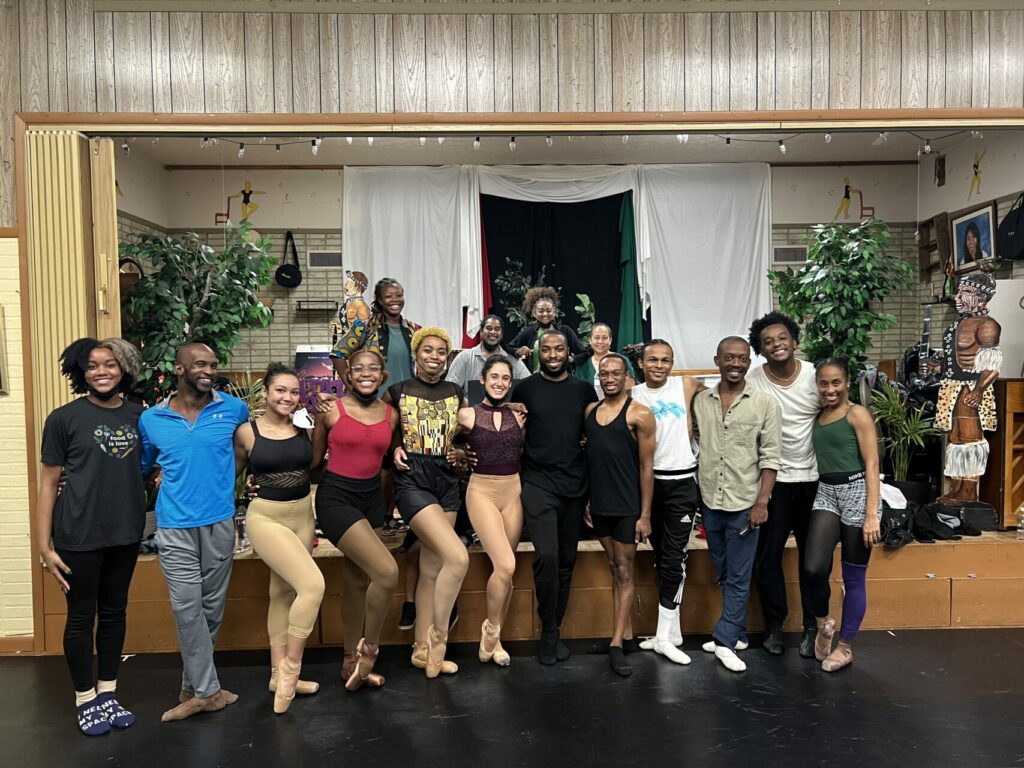
Co-founders and Co-artistic directors, Ms. Nena and Mr. Waverly, with Dance/USA fellow, shady Radical; visiting artist and former company member, Ira Cambric; Instructor, Deneen Kerns; and current Ballethnic Dance Company members: Naima Christopher, Ira Cambric, Maurissa Powell, Saabirah Christopher, Imani Christopher, Beatrice Polini, Demetrius Tucker, Tyler Davilsaint, Ahmad Hill, Calvin Gentry, Jamal White, and Karla Tyson.
The space features three indoor studios, a stage, two offices, a kitchen, prop storage, and a costume department. It also has an outdoor stage and performance area. Mr. Waverly emphasizes that it was this outdoor area and a set of mobile flooring that allowed them to keep performing throughout the COVID-19 pandemic. Whether they were at Ballethnic, other outdoor spaces, or even sites where professional floors were unavailable, Ballethnic could still dance.
A Miyagi Moment
One late afternoon I witnessed Mr. Waverly walking around the building with one of the company dancers pointing out plants that need to be repotted, composted, or left alone. The dancer was paying close attention and after a while was able to assess for himself which plants require what kind of attention. As I listened to Mr. Waverly explain how he regularly goes to Lowe’s, buys the 50%-off plants, and brings them to Ballethnic to see if he can give them new life, I think about the mission of the program. He says: “Sometimes I can help them grow and survive and sometimes I can’t…but that’s what I try to do.” There seems to be a relationship between Mr. Waverly’s approach to the environment and the mission of the company.

Ms. Suzanne, Ballethnic Administrative Assistant, giving directions to Spring Fest volunteers.
At any given moment, Mr. Waverly can be seen caring for the grounds. I am referring to grounds in multiple ways: as the luscious flora surrounding the property, but also as the portable flooring the company carries with them to dance on in untraditional performance spaces, and as the drumming or sonic base of performances. Mr. Waverly talks about how loving God and loving the earth go hand in hand. For him, there seems to be a relationship between taking care of the earth and taking care of the body. Through my observations I see how he is teaching dancers how to care by instilling values of environmental awareness into their dance practice.
The Village
Along with Mr. Waverly and Ms. Nena, there is a community of people that actively participate in the sustenance of the company and academy. The office personnel Ms. Karen and Ms. Suzanne answer phone calls, field questions, organize the Spring Festivals, and handle other administrative tasks. They also work the front of house during events and productions. Ms. Lisa is described by most as a very important person and the company manager, but describes herself as “just answering the phones.” She manages the class schedules, company members, and can be seen back of house during productions and events. Ms. Felicia is the accounting manager, who started taking classes at Ballethnic prior to working with the company in an administrative capacity. Mr. Adam is the troubleshooter. He is an IT specialist and web content manager who toured with the co-founders as a musician before Ballethnic was established. In addition to being a talented musician, his relationship with the co-founders and expertise in mathematics and computer sciences has made him a fixture at Ballethnic.
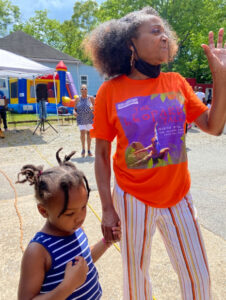
Ms. Nena Gilreath, co-founder of Ballethnic, with Windy Radical, the author’s daughter.
Spring Fest
Spring fest is the Academy’s Open House, designed to engage with the community. It starts with performances by the whole academy, from Kiddie Ballethnicize to Ballethnic Youth Ensemble. Then, there is fun and games for all ages: a bounce house, horse rides, food trucks and even an opportunity to Dunk the Director at the Dunk tank. It is a lot of fun, a lot of smiles, and also a great way to raise funds for the academy. While the Spring Fest was the first time I brought my daughter to Ballethnic and the first time she met Ms. Nena, she gravitated towards her positive energy as can be seen in this picture of them holding hands.
Preparing for DC
Ballethnic was invited to The Kennedy Center’s Reframing the Narrative Program with Dance Theatre of Harlem and Collage Dance Collective from June 15-19. This event aimed to “acknowledge that the artistry and leadership of Black ballet dancers has shaped ballet throughout the United States and across the globe. The history of Black dancers in ballet is rich—but many voices and many stories have remained untold and unheard.” This was a huge opportunity for the company and they certainly have been preparing for it.
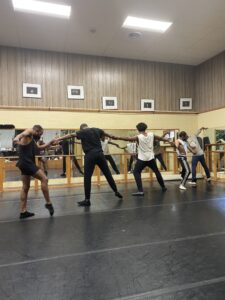
Snapshots of rehearsals for Kennedy Center’s Reframing the Narrative.
Ballethnic Archive and Preservation Plan
At the conclusion of the first two weeks of my Fellowship, I was familiar with East Point as a rich enclave of Atlanta, as well as Ballethnic’s community of professional dancers, staff, instructors, students, and parents. I also understand a bit of the workflow and production culture. Moving into phase two of the archival project, Mr. Waverly and I sketched out a plan for preservation with the help of Derek Mosley, my project mentor at Auburn Avenue Research Library. While the materials are diverse and many, Mr. Waverly decided I should focus on Urban Nutcracker, a production that has spanned the history of the company since 1990. Along with Mr. Adam, they have already started pulling together the digital materials (both digitized from physical and born-digital), performance programs, and boxes of paper-based objects related to that work. One of the foreseeable challenges at this point appears to be the lack of space to house the archive. However, we have decided on a temporary space where the materials can live while I work on them.
Check out images of Ballethnic’s archive materials (click on images to expand):
- Archival materials in Waverly Lucas’s Basement
- Archival materials in Ms. Nena’s and Mr. Adam’s Office
- Archival materials in boxes and on shelves in Ballethnic’s Main Office.
- Costume Area with diagram of department.
- Archival materials in Mr. Waverly’s Office
In a class with Ballethnic’s Youth Ensemble, Mr. Waverly pushes dancers to move past their comfort zones. While instructing one of the dancers he says, “I want you to go for it….I want you to feel like you are going to fall…go ahead…I will catch you…that’s it…did you feel that?” At Ballethnic, Mr. Waverly and Ms. Nena are doing more than just teaching white dance with an African flavor. They are teaching people who have been overlooked, dismissed, and unconsidered what it feels like to move past societal and self-imposed limitations. This lesson is not just important for young Black kids in East Point, but something we can all use. To preserve these lessons is an opportunity of a lifetime.
Ready to dig.
Top photo: Finale bows Urban Nutcracker Act II (Cast). Photography by Sirk Photography. Courtesy of Ballethnic Dance Company. All other photos courtesy of the author.
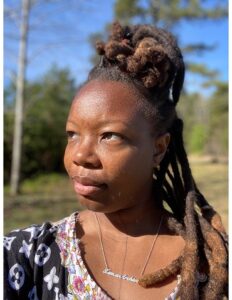 shady Radical is a performance archivist and founder of The Radical Archive of Preservation. Her practice is grounded in ritual, resistance, and movement practices. She uses exhibition and performance to pull anarchival material out of traditional archives and historical memory to activate silences and erasures attributed to forms of subjugation.
shady Radical is a performance archivist and founder of The Radical Archive of Preservation. Her practice is grounded in ritual, resistance, and movement practices. She uses exhibition and performance to pull anarchival material out of traditional archives and historical memory to activate silences and erasures attributed to forms of subjugation.
As a Fellow, shady looks forward to working with a nationally recognized southern institution committed to expanding access to professional dance opportunities for people of color. By combining ballet with African dance and other forms, Ballethnic directly contributes to the Black cultural production shady is most interested in studying, knowing, and preserving.
shady earned a M.A. in Curatorial Studies from New York University and B.A. in Art History from The College of Saint Elizabeth. Her professional experience includes working at Tyler Perry Studios, Atlanta Contemporary, and Assistant Chair for Society of Georgia Archivists’ Education Committee. shady is a Ph.D candidate at Georgia State University.
____
We accept submissions on topics relevant to the field: advocacy, artistic issues, arts policy, community building, development, employment, engagement, touring, and other topics that deal with the business of dance. We cannot publish criticism, single-company season announcements, and single-company or single artist profiles. Additionally, we welcome feedback on articles. If you have a topic that you would like to see addressed or feedback, please contact communications@danceusa.org.
Disclaimer: Opinions expressed in guest posts do not necessarily represent the viewpoints of Dance/USA.
